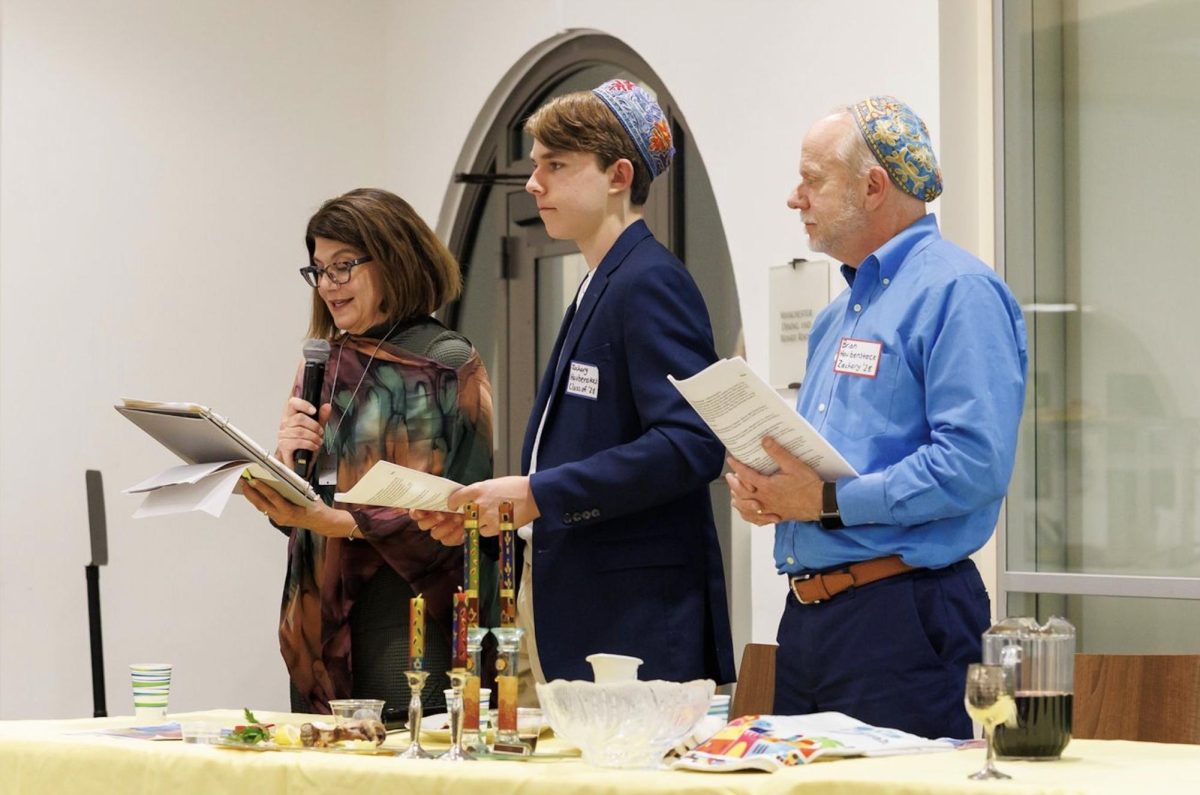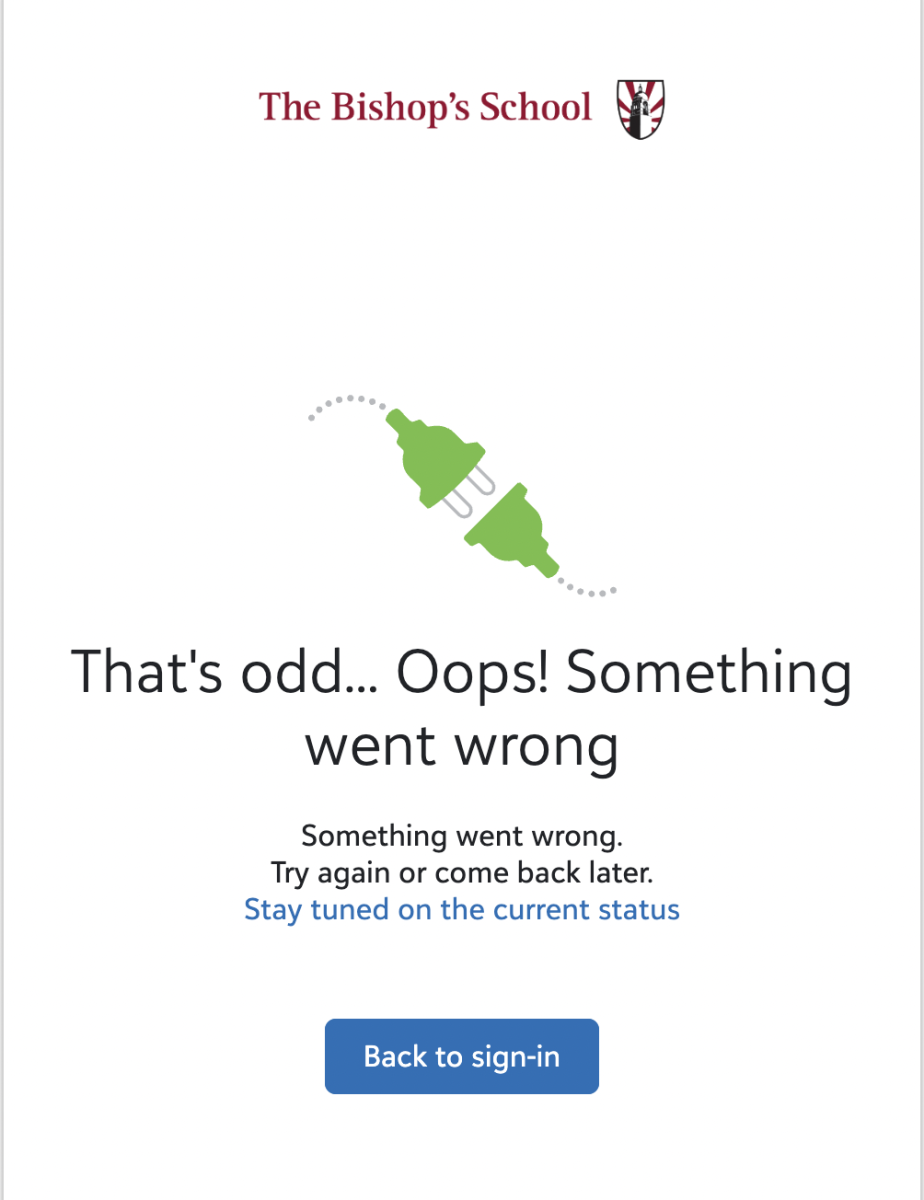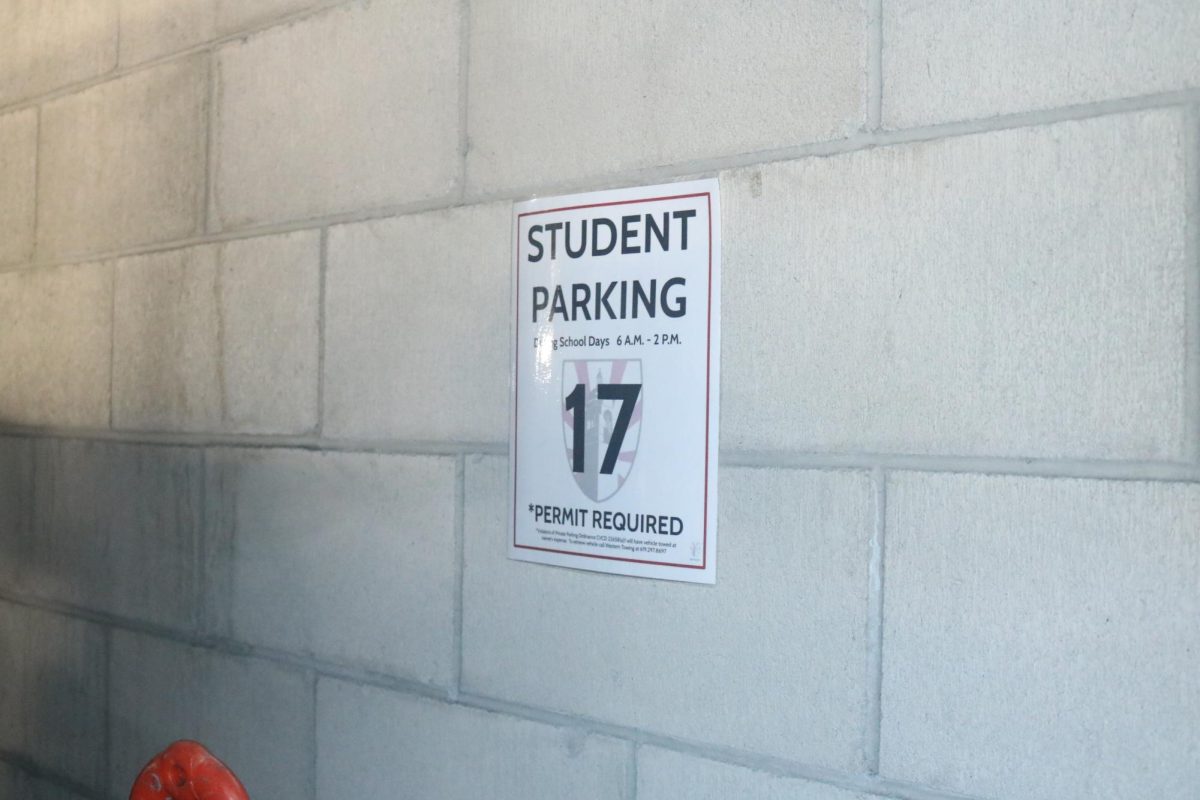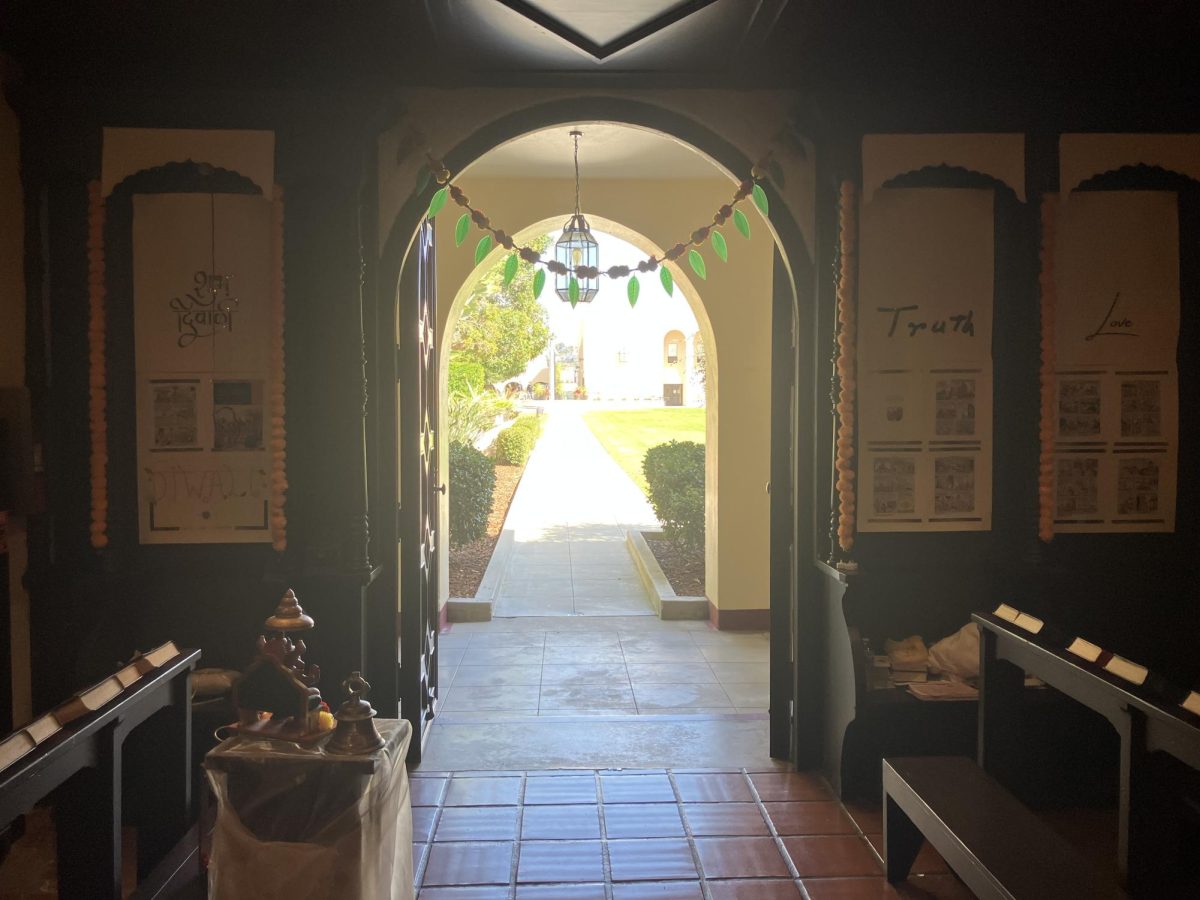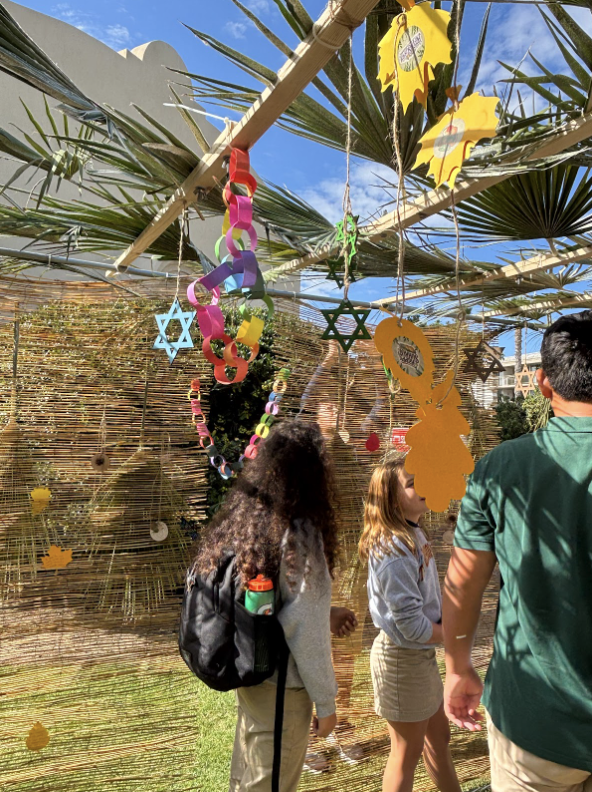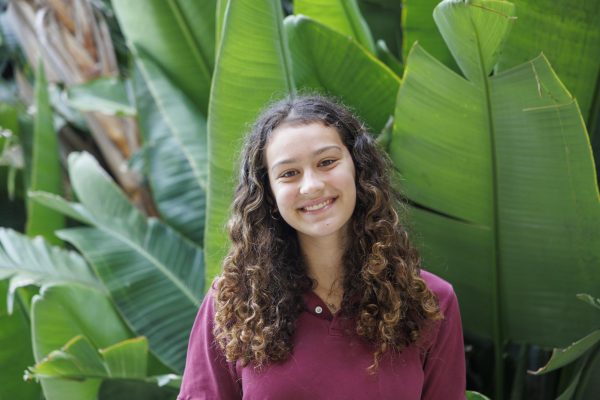In the bustle of a busy afternoon on campus, an alcove of reflection, fun, and education engulfed the school cafeteria. Bishop’s parents, teachers, and students gathered around tables filled with matzah, grape juice, maror (bitter herbs), and much more, as the community celebrated the third annual Bishop’s Seder dinner.
The Seder dinner is a commemorative meal, observed during the Jewish holiday of Passover. As Jewish Student Association (JSA) Faculty Sponsor Mr. Matthew Valji explained, the Seder meal has two parts: “One is a retelling of the story of the exodus of Jews from Egypt to Israel. And the second part is a meal.” JSA Member Zachary Haubenstock (‘28) described the Seder as a “guided ritual” that honors the Jewish people’s ancient journey out of slavery. “There’s a very specific order of events that Jews are asked to follow with particular prayers, special stories, symbolic consumption of food and a variety of other elements,” Mr. Valji said.
The Bishop’s Seder was a little different from the format of a regular Seder. It was organized by JSA, as well as the Global Education Initiative (GEI), which is a Bishop’s program headed by the Director of Global Education Dr. David Moseley. The meal was guided by Zachary, his dad (Mr. Brian Haubenstock), and his mom, the GEI Co-Chair Mrs. Lori Shearer. The three of them told the story of the Jewish people’s exodus, and also explained to the group the significance of every action to help those unfamiliar with the guided dinner. One important example is the unleavened bread, or matzah. “Matzah represents the unleavened bread because the Jews [who] were escaping Egypt didn’t have time to let their bread rise because they were in such a rush,” explained JSA Leader Sabrina Feldman (‘26).
Matzah bread is one of many symbolic items at the Seder table. Another important one is haroset, a mixture of fruits, spices, and nuts. It represents the mortar that the Jewish people used to construct buildings while in slavery in Egypt. The plate also included karpas (parsley), dipped in salt to represent both the the tears of Jewish people during enslavement (the salt), but also their hope in spite of their situation. In addition to the more traditional items, each table at the Bishop’s Seder also had a lemon, to raise awareness for the Israeli hostages currently in Gaza.
For many Jewish students, an event such as the Bishop’s Seder is important for their community. “Representation matters,” Mr. Valji said. “If a family is choosing to send their student to a school like Bishop’s, they are making a choice based not only on our education, but also on our values…[of] open-mindedness and respect.” He added, “One of the best ways to include someone is to provide space for them to celebrate and commemorate.”
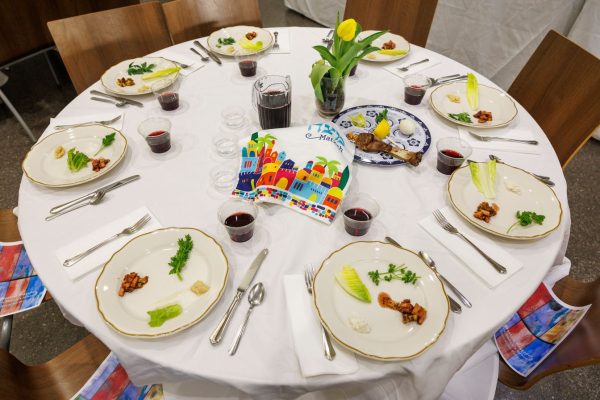
(Ms. Arielle Bader)
Sabrina felt similarly. “Bishop always likes to put a big emphasis on exposing the students and family to different kinds of traditions and religions and people that exist in the world so the Seder is just like another example of that,” Sabrina explained. “It’s just an opportunity for people who are in the community and are curious to get out and get involved and just see what it’s like to be at a Seder.”
Many Jewish community members also find the Seder important for the non-Jewish people at Bishops. Kayla Pfefferman (‘26) came to the Seder with a non-Jewish friend. “I always really appreciate having the Jewish community on campus, and also non-Jews like my friends now,” she said. “I just think it’s really sweet that people come around…just to learn about it and know their different customs.”
Penelope Fountain (‘26), Kayla’s friend, had a great time as well. “It’s been really interesting to hear everything,” she said. “I’ve definitely heard some of the stuff just from being in religion classes, but it’s been really cool to see the community and hear it from people who have been doing this sort of thing their whole lives,” she added. She also mentioned that she noticed how “friendly” everyone was to her as an outsider of the Jewish community.
In addition to the meal and the guided meal, many members of JSA gave speeches, including Sabrina and Mr. Valji. Sabrina’s speech focused on the importance of celebrating Seder with your loved ones. “I wanted to just convey how this Passover holiday and the Seder and the meal is all just a great place for community whether it’s at Bishop’s or with our family,” she explained.
Mr. Valji’s speech focused on encouraging Jewish people to find joy despite the difficulties they’ve faced in the past and still do in the present. “I spend a lot of time — and I know Jews spend a lot of time — thinking about and worrying about antisemitism and Jewish oppression,” Mr. Valji explained. “While I feel that that’s extraordinarily important…one of the concerns that I have is that if we spend too much time focusing on the past, that we might end up being paralyzed by fear.” He hopes Jewish people will learn to “balance a historical point of view” with a “boldness and looking towards the future.”
After the speeches and the guided meal, everyone enjoyed dessert and matzah ball soup — a favorite of many .“I look forward to [matzah ball soup] literally every single year,” Sabrina said. “It’s the most delicious thing ever,” she exclaimed. “I have like five helpings of it.”
Towards the end, the younger attendants also participated in the searching of the afikomen — a small piece of matzah is hidden in a napkin and children get to go look for it.
Ultimately the Seder dinner was night full of delicious food and fervent conversation, but also one of learning and contemplation. For Jewish and non-Jewish community members alike, it was a success.
A correction was made on April 30th, 2025: An earlier version of this article didn’t include recognition of the main event organizers: Director of Global Education Dr. Moseley, Co-Chair Ms. Lori Shearer, and parent volunteers.


